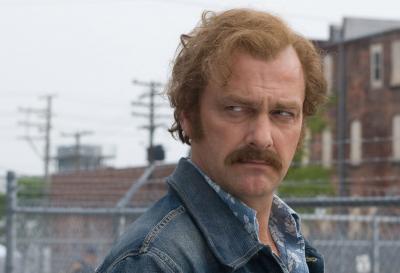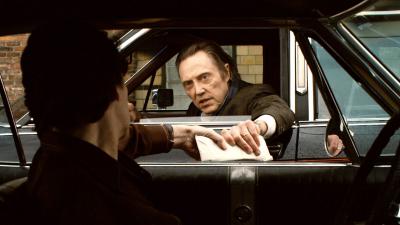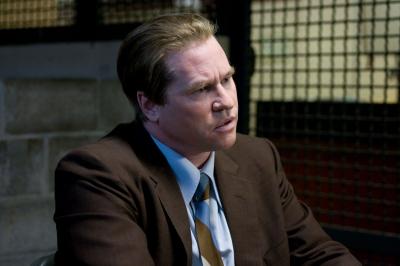By: debbie lynn elias

Back in the 70’s, Danny Greene was a name that regularly popped up in the news not only in Cleveland, Ohio, but around the country. And in the years 1976-1977, other names were even more familiar as Cleveland became the victim of 36 bombings in 1976 alone, earning the moniker of “Bomb City, U.S.A.” John Nardi, John Scalish, James Licavoli, Alex “Shondor” Birns, Alfred Calabrese, and others were all grappling for top billing in the Mafia turf wars that were taking hold of Cleveland and the country. ATF couldn’t find enough manpower to investigate all the crime in Cleveland and northeastern Ohio. But while warring escalated, Greene seemed to always have the luck of the Irish on his side, as time and again, even while taking out eight Mafia assassins sent to kill him, he walked away from tragedy unscathed; that is until October 6, 1977, when he went to a dental appointment.
Danny Greene’s story, KILL THE IRISHMAN, is the one from which myths and legends are made. Adapted for the screen by Jonathan Hensleigh and Jeremy Walters from the true-life book by former Cleveland District Police Chief Rick Porello, “Kill the Irishman: The War That Crippled the Mafia”, and directed by Hensleigh, KILL THE IRISHMAN chronicles the rise of mobster Danny Greene from longshoreman to union racketeer, with the true flavor of a 70’s gritty crime story.

In Danny Greene, Jonathan Hensleigh has a character who is larger than life and as a director, thanks to perfect casting with Ray Stevenson, Hensleigh turns the man into mythical proportions of intelligence, raw courage, confident security, and a man who actually had a heart. Ray Stevenson is dynamic as Greene. His energy, enthusiasm and confidence are boundless and he always has that little glint in his eye that endears him to you, even as he’s pulling the trigger and blowing someone’s brains out. Imposing in size and in command of the screen, it’s the moments where Stevenson balances a show of heart while being respectful and commanding respect of others that he delicately dances to perfection.

Casting is a mobster’s dream – first you have Stevenson, but then add Vincent D’Onofrio as Jack Nardi. Give me D’Onofrio anytime, but in a Mafia film, he’s at the top of my list. He is a standout with a subdued calm , giving Nardi this “everyman” quality that is likeable to a fault. Now toss in Tony Lo Bianco, Steve Schirripa, Vinny Vella and Paul Sorvino helping to round out the “WOPS.” A welcome addition is Sorvino who always adds a sense of authenticity in any crime or Mafia themed piece Val Kilmer is quite interesting as Greene’s childhood friend, Joe Manditski, now police detective caught between a rock and hard place in his dealings with Greene. Kilmer is solid in his portrayal of Manditski, even showing glimpses of emotion and humanity. What I particularly appreciate about Kilmer’s performance though, is the tacit calm he brings to the film. Disappointing though is that the script never fully develops the relationship or conflict between Greene and Manditski. Given their lifelong relationship, I expected more meat for Kilmer and Stevenson to bite into.

It’s hard to imagine anyone but Christopher Walken playing the somewhat bizarre Shondor Birns, which translates into Walken being Walken. But it works. He’s good, quirky, off balance but interesting. Veteran tough guy Robert Davi also appears as the assassin sent by New York leaders to Cleveland to eliminate Greene. A necessary character, Davi seems essentially underused and is limited to evil drive-by glances.
Particularly touching is Fionnula Flanagan as Greene’s neighbor Grace O’Keefe. A tough old Irish bird, she serves to bring a little insight into the mindset of Greene (and add a little spice to the film) who envisions himself as a mystic Celtic warrior.

As writer and director, Hensleigh is true to the authenticity of the period and doesn’t sugar coat the story, although his car bombs seem a bit over the top but fantastic. Too bad we didn’t see all 36 detonations, although what we did see contributed to some really great kills. Gotta hand it to the Mafia boys, they knew how to have flair and they liked to do things big. No stranger to action films, as masterful as Hensleigh is with that aspect of filmmaking, it is the heart and humanity that he and Walters give the characters and their relationships that carry the film and make it more than a bang-bang-shoot-em-up flick. Employing a narrative technique with Kilmer’s Manditski telling the story, events occurring over decades are cohesively tied together. Interestingly, no matter how small the character or his/her dialogue, each adds something to the film and the story of Danny Greene. Key to character immersion is also the authenticity of the vernacular employed in the dialogue. Pitch perfect.

Particularly effective is Douglas Crise’s editing which propels the film ever forward. Cinematographer Karl Lindenlaub ebbed and flowed with the lensing and lighting, capitalizing on the desaturated color palette that lends itself so well to the grainier film stock and grit of the 1970’s, serving only to intensify the feel of the era. One area where KILL THE IRISHMAN truly excels is with the production design. Meticulous beyond fault, the cars, costumes, houses are impeccably apportioned for the period.
Electing to shoot in Detroit was a wise choice, not only for the great tax incentives for filmmakers, but also for the fact it has very depressed areas reminiscent of the 70’s period, exemplifying the essence and look of a gritty Great Lakes port city.
Danny Greene – Ray Stevenson
Jack Nardi – Vincent D’Onofrio
Joe Manditski – Val Kilmer
Christopher Walken – Shondor Birns
Directed by Jonathan Hensleigh. Written by Hensleigh and Jeremy Walters based on the true-life
book by Rick Porello, “Kill the Irishman:The War That Crippled the Mafia”











